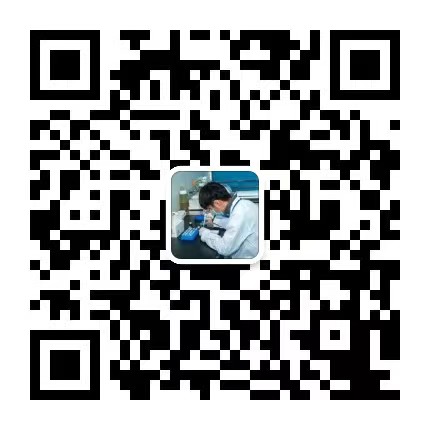What are the testing items for polycyclic aromatic hydrocarbons? Baijian.com can provide polycyclic aromatic hydrocarbon detection services. As a CMA qualification certification agency and high-tech enterprise, it is engaged in providing you with salt spray detection, fatigue detection, non-standard detection, unknown object detection and identification, composition detection, large-scale instrument testing, performance testing, national standard testing, qualitative and quantitative testing, leakage testing, scientific research testing, corrosion testing and other fields. It is a third-party, with complete testing instruments and a strong scientific research team, A testing report can be issued within 7-15 working days, supporting scanning to check authenticity, and providing nationwide on-site sampling and sample sending testing services. The testing cycle is short, the testing cost is low, and the testing data is scientific and accurate
Testing cycle: 7-15 working days
Testing cost: The engineer formulates an experimental plan for quotation based on the customer's testing needs and the complexity of the experiment.
The detection range of polycyclic aromatic hydrocarbons includes soil, electric toys, plastic boxes, drinking water, wires, nylon, carbon black, ink, fabrics, food glassware, wastewater, glass containers, fresh-keeping bags, kitchen appliances, footwear, automotive parts, plush toys, enamel, rubber, clothing, grease, EPDM, polyvinyl chloride, silicone, etc Testing items: detection of polycyclic aromatic hydrocarbons, detection of 16 types of polycyclic aromatic hydrocarbons, PAHS detection of polycyclic aromatic hydrocarbons, detection of polycyclic aromatic hydrocarbons, nuclear magnetic resonance detection of polycyclic aromatic hydrocarbons, infrared detection of polycyclic aromatic hydrocarbon volatiles, etc What are the functions of the testing report from BAIJIAN? What problems can I help you solve< p> 1. Sales use. (Selling one's own products and issuing third-party testing reports to make customers more confident in the quality of their products)2. Research and development for use. During the research and development process, when encountering some challenging problems, we can solve them by testing report data, thereby shortening the research and development cycle and reducing research and development costs. 3. Improve product quality. (By comparing the testing data, identify the problems with one's own product, improve product quality, and reduce production costs)
4. Use of research paper data 5. Bidding, Bidding use (BAIJIAN has a relatively short testing cycle, low testing costs, and high recognition, making it particularly suitable for bidding use)
Detection standard for polycyclic aromatic hydrocarbonsGB/T 3780.28-2020 Carbon black Part 28: Determination of polycyclic aromatic hydrocarbon content
GB 5009.265-2016 National food safety standard Determination of polycyclic aromatic hydrocarbons in food
GB 5009.265-2021 National food safety standard Determination of polycyclic aromatic hydrocarbons in food
GB/T 23213-2008 Determination of polycyclic aromatic hydrocarbons in vegetable oils Gas chromatography-mass spectrometry
GB/T 24893-2010 Determination of polycyclic aromatic hydrocarbons in animal and plant fatsGB/T 26411-2010 Determination of 16 polycyclic aromatic hydrocarbons in seawater Gas chromatography-mass spectrometry
GB/T 28189-2011 Determination of polycyclic aromatic hydrocarbons in textiles
GB/T 29614-2013 Determination of polycyclic aromatic hydrocarbon content in vulcanized rubber
GB/T 29614-2021 Determination of polycyclic aromatic hydrocarbon content in vulcanized rubber
GB/T 29616-2013 Determination of polycyclic aromatic hydrocarbons in thermoplastic elastomers Gas chromatography-mass spectrometry
GB/T 29670-2013 Determination of naphthalene in cosmetics
Benzo [a] Determination of 9 polycyclic aromatic hydrocarbons including anthracene by gas chromatography-mass spectrometryGB/T 29784.1-2013 Determination of polycyclic aromatic hydrocarbons in electronic and electrical products Part 1: High performance liquid chromatography
GB/T 29784.2-2013 Determination of polycyclic aromatic hydrocarbons in electronic and electrical products Part 2: Gas chromatography-mass spectrometry
GB/T 29784.3-2013 Determination of polycyclic aromatic hydrocarbons in electronic and electrical products Part 3: Liquid chromatography-mass spectrometry
GB/T 29784.4-2013 Electronic and Electrical Products Determination of polycyclic aromatic hydrocarbons in products - Part 4: Gas chromatography
GB/T 32952-2016 Determination of polycyclic aromatic hydrocarbon content in fertilizers - Gas chromatography-mass spectrometry
GB/T 33391-2016 Footwear and footwear components - Limited substances present in polycyclic aromatic hydrocarbons (PAH)
GB/T 33427-2016 Test Method for Polycyclic Aromatic Hydrocarbon Content in Rubber Shoes
GB/T 36488-2018 Determination of Polycyclic Aromatic Hydrocarbons in Coatings
GB/T 36946-2018 Chemical Testing of Leather Determination of Polycyclic Aromatic Hydrocarbons Gas Chromatography Mass Spectrometry
GB/T 40971-2021 Method for Determination of Prohibited and Restricted Substances in Furniture Products and Materials Polycyclic Aromatic Hydrocarbons
What are the advantages of Baijiawang Detection?? Why choose BAIJIAN< p> 1. BAIJIAN is a collectively owned testing institution 2. Free initial inspection, no testing fees will be charged during the initial inspection period 3. Multiple laboratory branches across the country support on-site sampling/sample testing 4. Short detection cycle, high detection cost, and complete experimental plan 5. Complete qualifications, complete laboratory instruments, and a strong research team6. 36 languages support writing MSDS services
The above is an introduction to the detection of polycyclic aromatic hydrocarbons. For more detection needs, please feel free to call our testing engineers at any time.
.